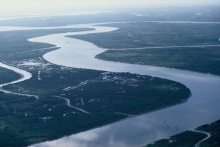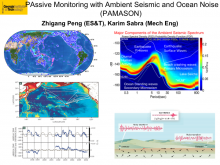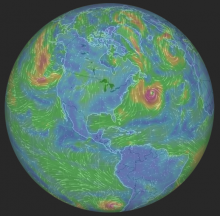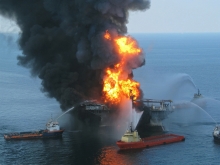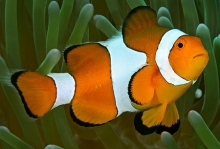- You are here:
- GT Home
- Sciences
- Home
- List of Available Research Projects
The exponential growth of human populations in the Mekong-South China Sea (SCS) system, the eutrophication of estuarine and coastal waters by excess nutrients transported by the Mekong River, and the rapid sinking of the Mekong Delta are fundamentally changing the biological productivity and biodiversity of the system, with uncertain implications these aquatic resources. In the near future, larger forcings will alter the linkages between the Mekong system and the SCS basin.
The exponential growth of human populations in the Mekong-South China Sea (SCS) system, the eutrophication of estuarine and coastal waters by excess nutrients transported by the Mekong River, and the rapid sinking of the Mekong Delta are fundamentally changing the biological productivity and biodiversity of the system, with uncertain implications these aquatic resources. In the near future, larger forcings will alter the linkages between the Mekong system and the SCS basin.
Ocean dynamics constantly generates seismic and acoustic noise (e.g. vie wave-seafloor interaction, surface wave activities, ice-noise and anthropogenic sources). This ubiquitous ambient noise waves, which can be measured continuously with hydrophones and seismic stations, travel around the earth and can be used to monitor their generating sources and image the propagating medium. This project will characterize the spatial and temporal generation mechanism of seismic and acoustic ocean noise sources which can be used for passive remote sensing and monitoring purposes.
The sustainability of human civilization and its evolving lifestyle depends fundamentally on a sustainable food and energy supply. This can largely be linked to the availability of reactive nitrogen (Nr), phosphorus (P) and trace-element nutrient availability for natural and managed ecosystems. Nr, P and Fe are known to stimulate productivity while other elements, like Cu and Mn, can be toxic for ecosystems. Nr is also a critical link for the carbon cycle, and directly/indirectly impacts climate and human/ecosystem health.
A large fraction of ocean variability on interannual and longer timescales is energized by random atmospheric weather, also referred to as climate "noise". Although the noise is random in time, spatially the atmospheric noise exhibits recurrent patterns, some of which are more efficient in triggering positive feedbacks between the ocean-atmosphere system or more generally amplifying the response of the ocean system. Noise patterns such as these, can trigger resonance in the climate system.
Plastic marine debris or the plastisphere impacts marine organisms through ingestion, entanglement, and as a source of toxic chemicals. The plastisphere could also have a major impact on biogeochemical cycles in the oceans. Plastics are transported via major ocean currents to central gyres, where they reside for decadal time scales. The amount of plastic waste is large, exceeding 2 kg/ km2 in central gyres. Even the most recent ocean surveys cannot account for the amount of debris estimated to enter the ocean, with inputs and outputs differing by orders of magnitude.
Plastic marine debris or the plastisphere impacts marine organisms through ingestion, entanglement, and as a source of toxic chemicals. The plastisphere could also have a major impact on biogeochemical cycles in the oceans. Plastics are transported via major ocean currents to central gyres, where they reside for decadal time scales. The amount of plastic waste is large, exceeding 2 kg/ km2 in central gyres. Even the most recent ocean surveys cannot account for the amount of debris estimated to enter the ocean, with inputs and outputs differing by orders of magnitude.
The characterization of sediment biogeochemistry at high spatial and temporal resolution is a necessary step in predicting the overall pathways and extent of hydrocarbon degradation in areas affected during and after an oil spill. However, geochemical data for sediments from deeper environments are scarce, and most studies do not measure the full suite of terminal electron acceptors involved in sediment diagenesis.
The characterization of sediment biogeochemistry at high spatial and temporal resolution is a necessary step in predicting the overall pathways and extent of hydrocarbon degradation in areas affected during and after an oil spill. However, geochemical data for sediments from deeper environments are scarce, and most studies do not measure the full suite of terminal electron acceptors involved in sediment diagenesis.
Native microbial communities (microbiomes) of the vertebrate gut exert vital effects on host ecology, physiology, and evolution. This project explores the potential that the gut microbiome of herbivorous fish plays a vital role in biochemically degrading algal toxins consumed by the host fish, and therefore structuring diet choice and ecology. The student will work jointly between the labs of Drs. Mark Hay and Frank Stewart to test this broad hypothesis, likely focusing on the microbiomes of specific coral reef herbivores.

